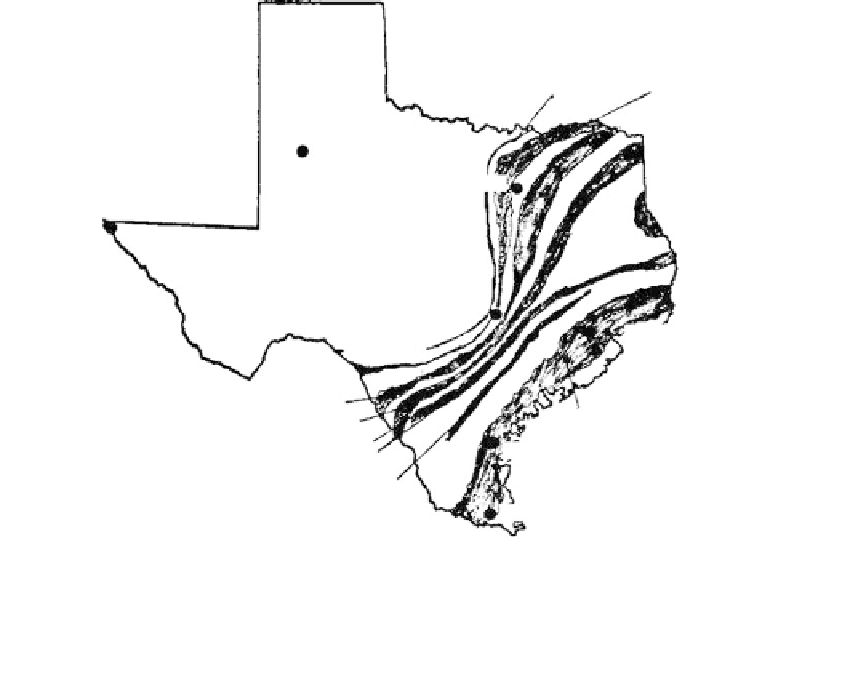Environmental Engineering Reference
In-Depth Information
Eagle Ford and
Woodbine
shales
Del Rio Shale
Texarkana
Lubbock
Dallas
El paso
Austin
Houston
San Antonio
Taylor group
Wilcox group
Cook Mtn. clay
Yegua clay
Lagarto clay
Beaumont clays
Corpus Christi
Brownsville
FIGURE 7.54
Location and extent of the most active clay soils in Texas (Gulf Coastal Plain). (From Meyer , K. T. and Lytton,
A. M., Paper presented to Texas Section ASCE, October 1966. With permission.)
their tendency toward frequent landslides. The Miocene formations and the large slide at
Palos Verdes Hills are described in
Section 9.2.6.
The topographic relief of the Pacific
Palisades area near Los Angeles where these formations are exposed is shown in
Figure
7.55
as a dissected coastal plain and a structural coastline.
Figure 6.33
shows an exposure.
Stratigraphy
Recent alluvium caps the mesas and ancient slide masses at lower levels; it grades from
very compact sand and gravel at the formation base to a hard, brown silty clay at the sur-
face (Gould, 1960).
Miocene formation
: Preconsolidation from removal of about 3000 ft of overburden has
caused the natural water content to be 5 to 10% below the plastic limit. The lower portion,
the Modelo, is referred to as shale in geologic reports, but in engineering terms it is
described as “hard, dark gray silty clay” (montmorillonite) thinly bedded with lamina-
tions and partings of fine sand. It can be found in massive and highly bituminous or sandy
phases. Gradations and plasticity limits vary considerably. Intense tectonics has resulted
in intricately distorted bedding (see Figure 6.33), numerous small fractures, randomly ori-
ented, and occasional slickensides. The latter are revealed when a specimen is broken open
or sheared. The weathered Modelo, the upper portion, is lighter in color and iron-stained,
containing growths of gypsum crystals, with lower SPT values and higher water contents
than the parent material. The average identification properties for these materials are
given in
Table 7.9
and shear strength values in
Table 3.38.
Paleocene formation:
The Martinez is described as a hard, dark-green clay with pockets of
medium to fine sand and occasional calcareous nodules and cemented fragments; heavily
preconsolidated; and highly fractured, slickensided, and distorted by tectonics. Two


